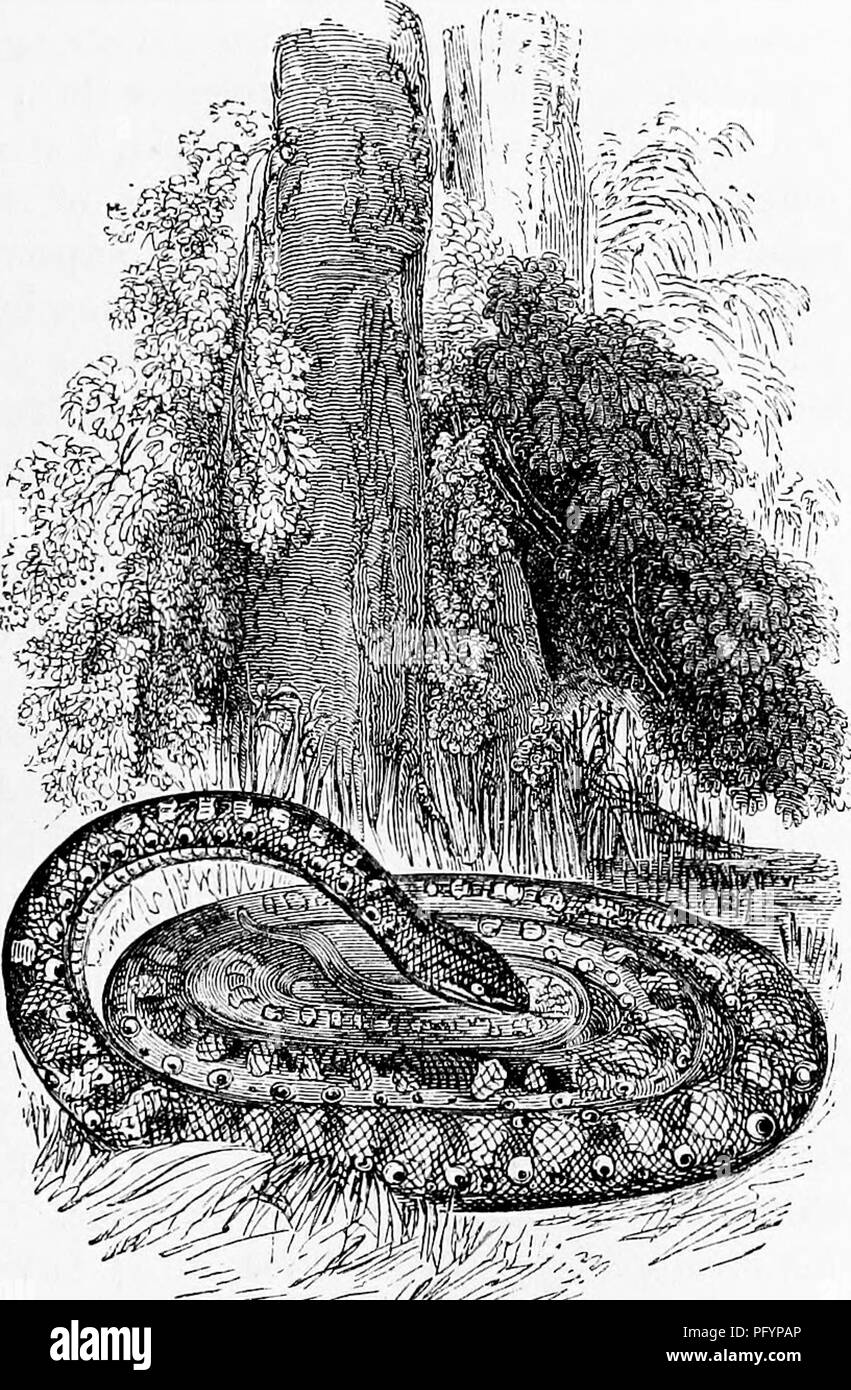. Reptiles and birds. A popular account of the various orders; with a description of the habits and economy of the most interesting. Birds; Reptiles. ABOMA. 63 length of the hack, and variable spots on the sides ; these are generally dark, with a whitish semi-lunar mark. This formidable Reptile has all the habits of its congeners; it is found in the marshy swamps of tropical America, and near the rivers, where it lies in wait for its prey. The Boas, pro- perly so called, have the scales smooth ; labial shields smooth, not pitted; the body compressed, taper- ing to the tail, which is long and p

Image details
Contributor:
Central Historic Books / Alamy Stock PhotoImage ID:
PFYPAPFile size:
7.1 MB (716 KB Compressed download)Releases:
Model - no | Property - noDo I need a release?Dimensions:
1279 x 1953 px | 21.7 x 33.1 cm | 8.5 x 13 inches | 150dpiMore information:
This image is a public domain image, which means either that copyright has expired in the image or the copyright holder has waived their copyright. Alamy charges you a fee for access to the high resolution copy of the image.
This image could have imperfections as it’s either historical or reportage.
. Reptiles and birds. A popular account of the various orders; with a description of the habits and economy of the most interesting. Birds; Reptiles. ABOMA. 63 length of the hack, and variable spots on the sides ; these are generally dark, with a whitish semi-lunar mark. This formidable Reptile has all the habits of its congeners; it is found in the marshy swamps of tropical America, and near the rivers, where it lies in wait for its prey. The Boas, pro- perly so called, have the scales smooth ; labial shields smooth, not pitted; the body compressed, taper- ing to the tail, which is long and prehensile; the head is compara- tively small, being enlarged behind, and contracted towards the muzzle, which is rather short. The crown is covered with scales; the nostrils lateral, between tw9 plates. Four spe- cies of this genus. Fig. 15.—Aboma (^Epicrate^ cenckria). are recognised by naturalists, all of which have been described by travellers as the true Boiguacu, or Boa-constrictor of Linnaeus. This species has the scaly circle of the orbit separated from the upper labial plates by one or two series of scales. A large chain consisting of blackish hexagonal spots, alternating pale oval stains, notched and jagged, extending the whole length of the back, and forming a very elegant design. This species seems to be strictly confined to tropical America, Humboldt found it in Guiana, and the. Please note that these images are extracted from scanned page images that may have been digitally enhanced for readability - coloration and appearance of these illustrations may not perfectly resemble the original work.. Figuier, Louis, 1819-1894; Gillmore, Parker, ed. Springfield, Mass. , W. J. Holland